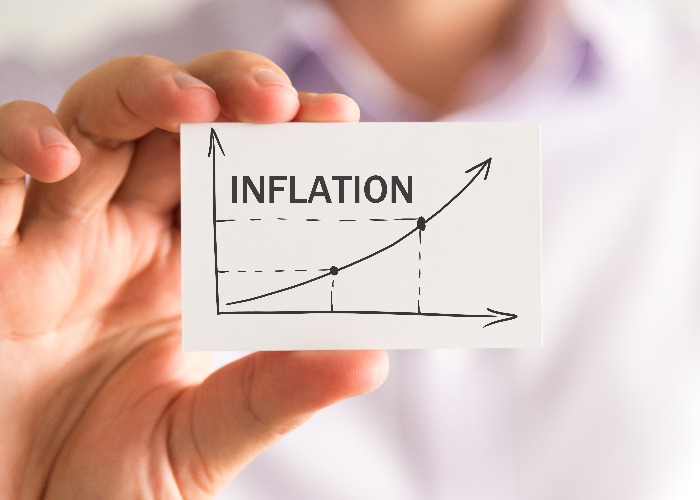CPIH: what the new UK inflation rate includes, how it's calculated and how it will impact your money

CPIH is the new headline measure of UK inflation. Find what this will mean for tax allowances, state benefits, pensions and more.
Sections
UK inflation
Inflation is the rate at which the prices of goods and services bought by households rise and fall.
In the UK, there are three indices which measure inflation: the Retail Prices Index (RPI), Consumer Prices Index (CPI) and the new CPIH.
What is CPIH?
CPIH is the new headline measure of inflation produced by the Office for National Statistics (ONS).
It replaced the Consumer Prices Index (CPI) as the preferred measure on 21 March 2017.
It’s the first time there has been a change to the headline rate of UK inflation since CPI replaced the Retail Prices Index (RPI) in 2003.
What does CPIH include?
CPIH is pretty much the same as CPI in terms of the method of calculation, the population coverage and the basket of goods and services, but includes Owner Occupiers’ Housing (OOH) and Council Tax costs.
So, the ‘H’ in CPIH effectively stands for ‘Housing’.
Use a high-interest current account to stop inflation eroding your savings
Why has CPIH been introduced?
Housing makes up a significant part of most people’s monthly costs, but the CPI measure of inflation doesn’t take these into account.
This omission dates back to 1990s when CPI was invented by the EU. At the time statisticians could not agree on the best way to measure housing costs so the compromise was to leave them out entirely.
CPIH has been designed to help fill this gap and make inflation reporting more accurate.
Why is CPIH important?
The headline rate of inflation shows how the price of goods and services households spend money on rise and fall from month to month.
It’s also an important indicator of how the UK economy is performing and a key measure used by the Government and businesses to make decisions about things like interest rates, tax allowances, wages, state benefits, pensions, bills and many other payments.
So, the move to CPIH from CPI could start to have a significant impact on standards of living in the UK.
Historically, CPIH has been either the same or lower than CPI. The latest ONS figures show CPIH and CPI both stood at 2.3% in February 2017.
Should inflation be consistently lowered by adopting CPIH, this will erode the standards of living of many people over time.
Problems with CPIH
The new CPIH measure is controversial because of the way the Owner Occupiers’ Housing costs (OOH) are calculated.
The ONS is using ‘Rental Equivalence’, which takes the rent paid for a similar house in the private sector to calculate the costs faced by an owner occupier.
So rather than house prices, home insurance, water rates or other typical housing costs the OOH is measuring the price owner occupiers would need to pay to rent their own home.
Critics claim that rents aren’t a great indicator of housing costs as they are unrelated to many of the costs associated with owning a home and that the data being used will often be out of date.
The UK Statistics Authority (UKSA) isn’t happy with CPIH either. It removed its status as a National Statistic in 2014.
The ONS says that the Office for Statistics Regulation (OSR) has set out a number of requirements for CPIH to regain the designation as a National Statistic and it’s working to address these.
Is there a better way to include housing costs?
There is an alternative way to calculate housing costs called ‘Net Acquisitions’, which looks at house prices and all costs related to buying and maintaining a home.
The EU is moving towards this system and soon all member states will have to produce an OOH index using the ‘Net Acquisitions’ approach.
The UK’s other measure of inflation, RPI, includes housing costs.
This uses a ‘payments’ approach of adding up all the aspects you pay for in relation to your house and monitoring prices.
But the ONS has concluded that one of the formulae used to produce the RPI isn’t up to scratch and, as of 21 March 2017, the publication of RPI-related data was scaled back, limited to the information required for needs of existing users to be met.
What will happen to CPI and RPI?
The Government will issue monthly updates on CPIH as well as CPI and RPI.
That’s because the UK uses different inflation measures for different purposes so even though CPIH is the preferred headline rate of inflation CPI and RPI are still relevant.
CPI will be continued to be published as it is used the Government’s target for inflation and is put together to international standards in line with European regulations.
RPI – a long-standing measure of UK inflation – will also be published as it is tied to long-term contracts and to provide consistency in inflation reporting.
Comments
Be the first to comment
Do you want to comment on this article? You need to be signed in for this feature